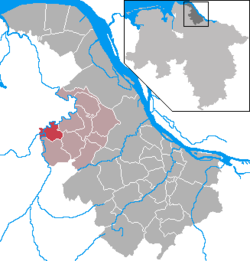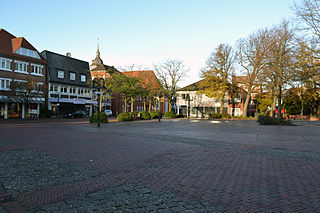
Bremervörde is a town in the north of the district (Landkreis) of Rotenburg, in Lower Saxony, Germany. It is situated on the Oste river near the centre of the "triangle" formed by the rivers Weser and Elbe, roughly equidistant from the cities of Hamburg, Bremen and Cuxhaven.

Osten is a municipality in the district of Cuxhaven, in Lower Saxony, Germany. It is situated on the river Oste. Osten also means "East" in German.
Elmlohe is a village and a former municipality in the district of Cuxhaven, in Lower Saxony, Germany. Since 1 January 2015 it is part of the town Geestland. It was a component municipality of the former Samtgemeinde Bederkesa.
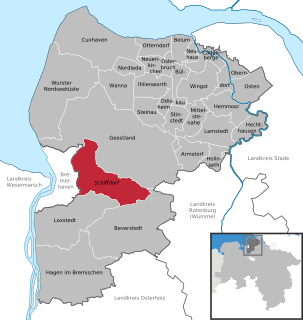
Schiffdorf is a municipality in the district of Cuxhaven, in Lower Saxony, Germany. It is situated at the eastern boundary of the Bremian city of Bremerhaven, and 35 kilometers south of Cuxhaven.

Bad Bederkesa is a village and a former municipality in the district of Cuxhaven, in Lower Saxony, Germany. Since 1 January 2015 it is part of the town of Geestland. It is situated approximately 20 km northeast of Bremerhaven, and 30 km southeast of Cuxhaven. Bad Bederkesa was the seat of the former Samtgemeinde Bederkesa, an administrative division consisting of several component municipalities.

Hagen im Bremischen is a municipality in the district of Cuxhaven, in Lower Saxony, Germany. It is situated approximately 20 km south of Bremerhaven, and 35 km northwest of Bremen. Hagen was the seat of the former Samtgemeinde Hagen.
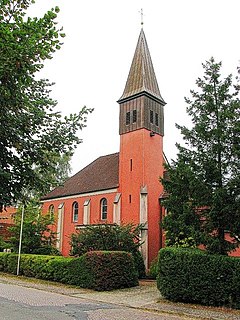
Hemmoor is a small town in the district of Cuxhaven, in Lower Saxony, Germany. It is situated near the river Oste, approx. 40 km northeast of Bremerhaven, and 25 km south of Brunsbüttel.

Neuhaus an der Oste is a municipality in the district of Cuxhaven, in Lower Saxony, Germany.

Cappel is a village and a former municipality in the district of Cuxhaven, in Lower Saxony, Germany. Since 1 January 2015 it is part of the municipality Wurster Nordseeküste.
Drangstedt is a village and a former municipality in the district of Cuxhaven, in Lower Saxony, Germany. Since 1 January 2015 it is part of the town Geestland.
Driftsethe is a village and a former municipality in the district of Cuxhaven, in Lower Saxony, Germany. Since 1 January 2014, it is part of the municipality Hagen im Bremischen.

Flögeln is a village and a former municipality in the district of Cuxhaven, in Lower Saxony, Germany. Since 1 January 2015 it is part of the town Geestland.
Frelsdorf is a village and a former municipality in the district of Cuxhaven, in Lower Saxony, Germany. Since 1 November 2011, it is part of the municipality Beverstedt.
Hollen is a village and a former municipality in the district of Cuxhaven, in Lower Saxony, Germany. Since 1 November 2011, it is part of the municipality Beverstedt.
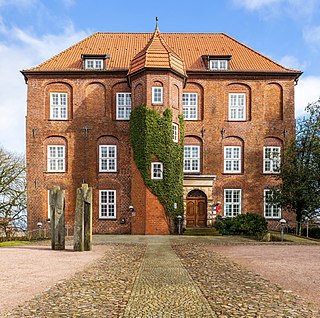
Agathenburg is a municipality in the district of Stade, Lower Saxony, Germany. It was formerly known as Lieth.
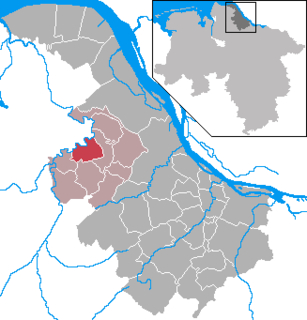
Burweg is a municipality in the district of Stade, Lower Saxony, Germany.

Düdenbüttel is a municipality in the district of Stade, Lower Saxony, Germany.

Großenwörden is a municipality in the district of Stade, Lower Saxony, Germany.

Nottensdorf is a municipality in the district of Stade, Lower Saxony, Germany.
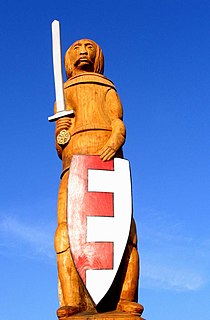
Brobergen is a village in the German municipality of Kranenburg in the district of Stade, Lower Saxony. The village of 6.06 km² has 220 inhabitants.


